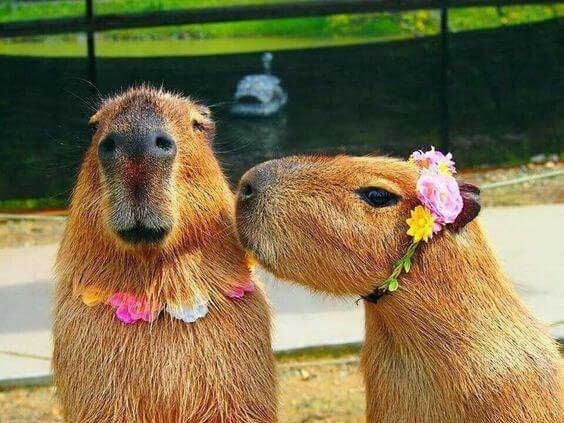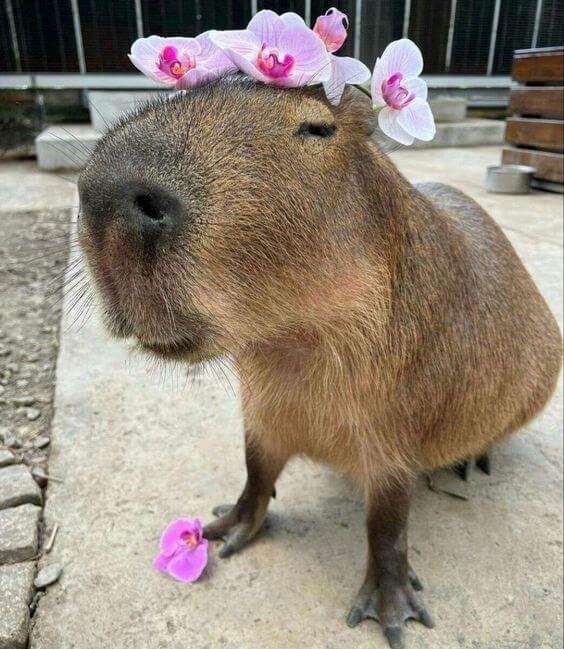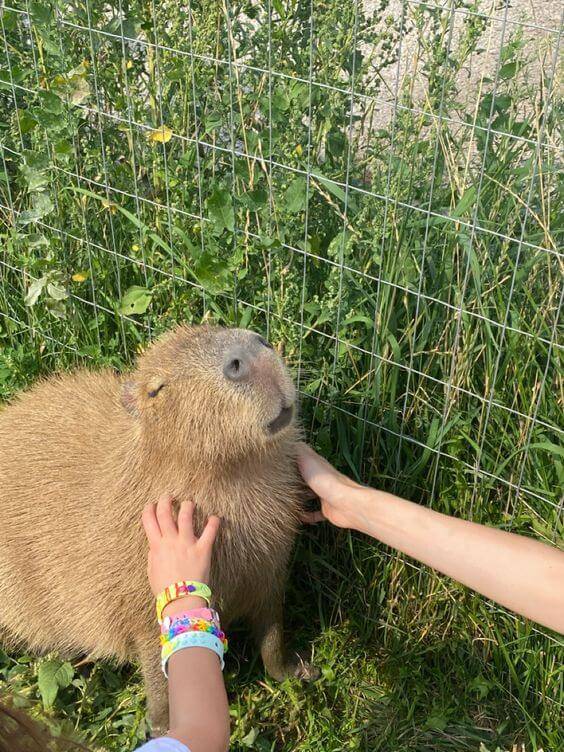Table of Contents
Get ready to be amazed by the captivating world of the Capybara life cycle! From birth to adulthood, these incredible creatures undergo a journey filled with remarkable transformations and fascinating stages. In this article, you will uncover the secrets behind the growth and development of these adorable creatures, gaining a deeper understanding of their captivating life cycle. So, grab your magnifying glass and prepare to embark on an exciting adventure into the world of Capybaras!
Embryonic Development
Gestation
During the gestation period, which lasts around 150 days, the capybara embryos develop within the female’s uterus. The mother capybara typically gives birth to a litter of anywhere from one to eight pups, although the average litter size is around four to five. The gestation period may vary slightly depending on environmental factors such as temperature and food availability.
Litter Size
Capybaras are known for their relatively large litter size compared to other rodents. It is not uncommon for a female capybara to give birth to several pups in a single litter. The size of a litter can depend on various factors, including the female’s age, health, and availability of resources. While the average litter size is around four to five, larger litters of up to eight pups have also been recorded.
Incubation Period
Unlike many other mammals, capybaras do not undergo an incubation period. Instead, the embryos develop inside the female’s uterus during the gestation period. Once the gestation period is complete, the pups are born fully developed and ready to explore the world around them.
Birth and Early Life

Maternal Care
After giving birth, the mother capybara provides dedicated maternal care to her pups. She helps them nurse, keeps them warm, and protects them from potential threats. The mother’s presence and milk provide essential nutrients for the pups’ growth and survival during their early weeks of life. The bond between a mother capybara and her pups is strong, with the mother displaying nurturing behavior to ensure their well-being.
Physical Development
During the first few weeks, the capybara pups undergo rapid physical development. They grow quickly in size and strength and gradually develop their distinct features, such as their webbed feet and dense fur. As they grow, the pups become more independent, venturing further away from their mother and starting to explore their surroundings.
Weaning
Around two to three months of age, capybara pups begin the weaning process. During this time, they start to consume solid foods in addition to their mother’s milk. The transition from solely relying on milk to including vegetation and other suitable food sources is an important milestone in their development. Weaning allows the pups to adapt to their herbivorous diet and prepares them for the next stage of their lives.
Juvenile Stage
Social Interaction
As capybara pups enter the juvenile stage, they start to engage in social interactions with their siblings and other members of their group. They learn crucial social skills through play and observation, such as grooming, vocalizations, and establishing hierarchies within their group. These interactions help shape their future behavior and enable them to navigate the intricate dynamics of capybara society.
Learning and Exploration
Juvenile capybaras are highly curious and engage in extensive exploration of their environment. They venture into nearby bodies of water, familiarize themselves with suitable grazing areas, and learn to identify potential threats and food sources. This stage of exploration plays a vital role in their cognitive and physical development, equipping them with the knowledge and skills necessary for adult life.
Growth and Development
During the juvenile stage, capybaras experience significant growth in both size and weight. Their bodies continue to develop, and they gradually reach their adult size, which can range from 40 to 65 kilograms. This period of growth is fueled by their herbivorous diet, primarily consisting of grasses, aquatic plants, and other vegetation. By the end of the juvenile stage, capybaras are typically fully grown and prepared to enter adolescence.
Adolescence and Maturity
Sexual Maturity
Capybaras reach sexual maturity at around one to two years of age. This stage marks the transition from adolescence to adulthood, and individuals are now capable of reproduction. Female capybaras undergo estrus cycles, typically lasting between eight to ten days, during which they are receptive to mating. Male capybaras, on the other hand, display behaviors such as scent marking and vocalizations to attract potential mates.
Territorial Behavior
As capybaras mature, they start exhibiting territorial behavior. They mark their territories by scent marking and vocalizing, warning other individuals to respect their boundaries. Establishing and defending territories is crucial for maintaining social order within capybara communities and ensures access to resources such as food and water. Territory disputes among mature capybaras are resolved through various communication methods to avoid physical confrontation whenever possible.
Reproduction
Once the capybaras have reached sexual maturity, they engage in reproductive behaviors to ensure the continuation of their species. Mating can occur year-round, although it is more common during the rainy season when resources are abundant. After a successful mating, the female capybara typically gives birth to a new litter after a gestation period of approximately 150 days, continuing the cycle of capybara life.
Adult Capybara Life

Social Structure
Adult capybaras are highly social animals, living in large groups known as herds. Within these herds, a hierarchical social structure exists, with a dominant male and female leading the group. Other members of the herd establish their rank through various social interactions and behaviors. Social bonds are reinforced through grooming, vocalizations, and proximity, emphasizing the importance of social cohesion in capybara communities.
Feeding Habits
Adult capybaras are herbivores, primarily feeding on grasses, aquatic plants, and other vegetation. They have specialized teeth and digestive systems that enable them to efficiently process plant material. Capybaras typically graze near bodies of water, allowing them to access a diverse range of plant species. Their feeding habits contribute to the maintenance of their environment, as they control the growth of vegetation and play a significant role in nutrient cycling within their habitats.
Habitat and Migration
Capybaras inhabit various types of freshwater habitats, including swamps, marshes, and riverbanks across South America. These semi-aquatic mammals are well adapted to a semi-aquatic lifestyle, spending a significant amount of time in water to regulate their body temperature and evade potential predators. While capybaras are not known for long-distance migration, they may at times move within their habitats in search of suitable resources, particularly during the dry season.
Disease and Mortality
Common Diseases
Capybaras can be susceptible to a range of diseases, including bacterial and viral infections, parasitic infestations, and dermatological conditions. Capybaras living in areas where they come into frequent contact with domestic animals are at a higher risk of contracting diseases. Proper veterinary care, routine health checks, and monitoring of their environment help mitigate the impact of diseases on capybara populations.
Predators and Threats
Despite their size, capybaras face predation from various sources. Large predators such as jaguars, caimans, and anacondas pose a threat to their survival, particularly to the young and weaker individuals. Additionally, habitat loss, fragmentation, and conflicts with humans, including illegal hunting, pose significant threats to capybara populations. Conservation efforts aim to minimize these threats and ensure the long-term survival of these remarkable creatures.
Longevity
Capybaras, on average, have a lifespan of around 8 to 12 years in the wild. However, in captivity, where they receive proper care, nutrition, and medical attention, capybaras have been known to live up to 15 years or even longer. Factors such as habitat quality, availability of resources, and exposure to predators play a significant role in their lifespan. The ability to adapt to changing environments and mitigate threats can contribute to their longevity.
Population Dynamics

Population Size
Estimating the exact capybara population size is challenging due to their widespread distribution and varying ecological factors across different habitats. However, they are considered to have stable and abundant populations throughout their range. The population size can fluctuate in response to factors such as predation, disease outbreaks, and human activities. Continued monitoring is essential to ensure the conservation and sustainable management of capybara populations.
Factors Affecting Population
Capybara populations can be influenced by various factors, including habitat degradation, competition for resources, predation, and disease. Human activities such as deforestation, habitat fragmentation, and illegal hunting can put additional pressure on capybara populations. Understanding these factors and their interactions is crucial for implementing effective conservation strategies and maintaining the balance of capybara populations within their ecosystems.
Conservation Status
Currently, the capybara is not listed as a threatened species by major conservation organizations. Its stable population size and adaptability have contributed to its conservation status. However, ongoing efforts are being made to monitor capybara populations and investigate potential threats. Protecting their habitats, implementing sustainable management practices, and raising awareness about their ecological importance are crucial for their long-term conservation.
Environmental Impact
Ecological Role
Capybaras play a significant ecological role as ecosystem engineers. Their grazing habits and foraging behavior influence the dynamics of vegetation communities, promoting species diversity and maintaining open landscapes. They can also serve as important prey species for a variety of predators, contributing to the overall balance of their ecosystems. Understanding their ecological role allows for better management and conservation of their habitats.
Habitat Modification
The presence of capybaras can influence the physical structure and composition of their habitats. Their grazing and browsing activities can modify the abundance and distribution of plant species, leading to changes in vegetation composition. Capybara burrows, often located near water bodies, can also impact soil structure and provide shelter to other organisms. These habitat modifications can have cascading effects on other species and contribute to the overall functioning of their ecosystems.
Human Interactions
Capybaras have gained popularity among humans and are subject to various interactions. In some regions, they are hunted for their meat and fur, threatening their populations. However, in other areas, capybaras are protected and valued for their ecological contributions. Capybaras have also become popular as ecotourism attractions and, in some cases, even as pets. Balancing human interactions with capybara populations is pivotal to ensure their conservation and minimize negative impacts.
Capybara and Human Culture

Symbolism and Mythology
Capybaras hold cultural significance in the regions where they are native. In some indigenous cultures, capybaras are considered symbols of fertility, abundance, and harmony with nature. They feature in legends, folklore, and traditional ceremonies, serving as a connection between humans and the natural world. Capybaras are celebrated for their gentle and sociable nature, reflecting qualities that humans aspire to possess.
Domestication
While capybaras have not been widely domesticated, there are instances of individuals and groups keeping them as pets or in captive settings. The adaptability and social nature of capybaras make them appealing to some individuals seeking unique companionship. However, responsible and ethical pet ownership is crucial to ensure the well-being of capybaras and prevent negative impacts on wild populations.
Capybaras as Pets
Keeping capybaras as pets requires careful consideration and adherence to appropriate regulations and standards. Capybaras have specific needs, including a suitable habitat, socialization opportunities, and a proper diet. They require ample space, access to water, and the ability to engage in natural behaviors. Interacting with capybaras as pets can be a rewarding experience, but it is essential to understand and meet their unique requirements.
Further Research and Conservation Efforts
Current Studies
Ongoing research aims to deepen our understanding of capybara behavior, ecology, and population dynamics. Scientists study various aspects, such as their foraging patterns, social interactions, reproductive strategies, and response to changing environments. Research also focuses on monitoring capybara populations and assessing the effectiveness of conservation initiatives. These studies provide valuable insights for the development of evidence-based conservation strategies.
Conservation Initiatives
Conservation initiatives for capybaras focus on protecting their habitats, minimizing human-wildlife conflicts, and promoting sustainable management practices. Efforts involve raising awareness about capybaras’ ecological importance, advocating for their legal protection, and establishing protected areas where they can thrive. Collaborative projects involving researchers, local communities, and governmental organizations strive to ensure the long-term survival of capybara populations.
Future Implications
The future of capybaras depends on our collective efforts to conserve their habitats and mitigate threats to their populations. Maintaining healthy capybara populations benefits not only these fascinating creatures but also the ecosystems they inhabit. By prioritizing their conservation, we contribute to the preservation of biodiversity, the sustainability of natural resources, and the interconnectedness of all living beings.
In conclusion, the life cycle of capybaras encompasses various stages, each marked by distinct developmental milestones, social interactions, and ecological contributions. From their embryonic development and nurturing maternal care to their dynamic roles as adults and their cultural significance, capybaras continue to captivate our interest and inspire conservation efforts. By understanding and appreciating the intricate details of their lives, we can cultivate a deeper respect for these remarkable creatures and foster their long-term coexistence with humans in a harmonious and sustainable manner.

